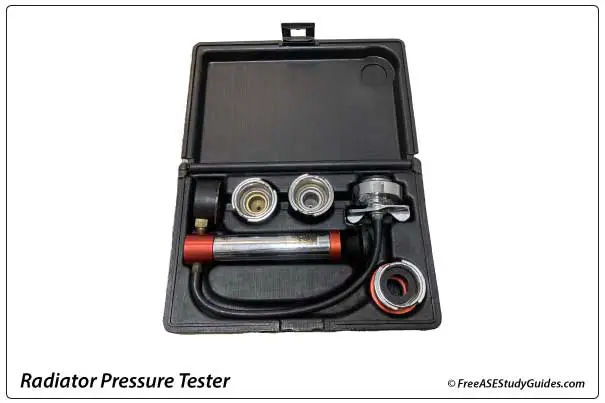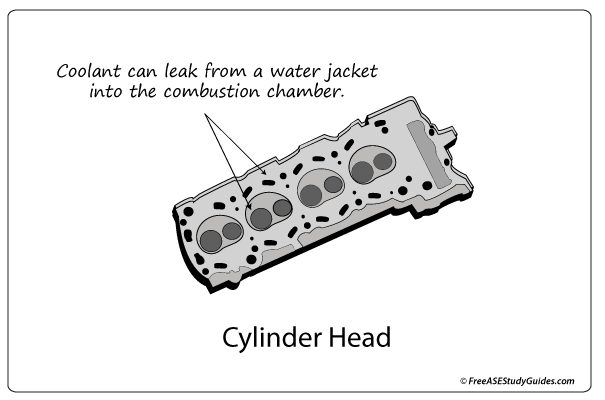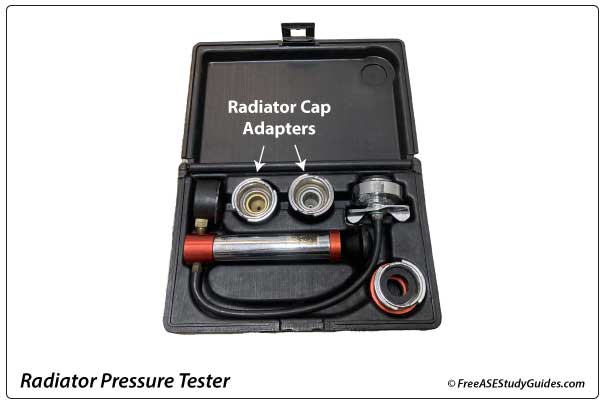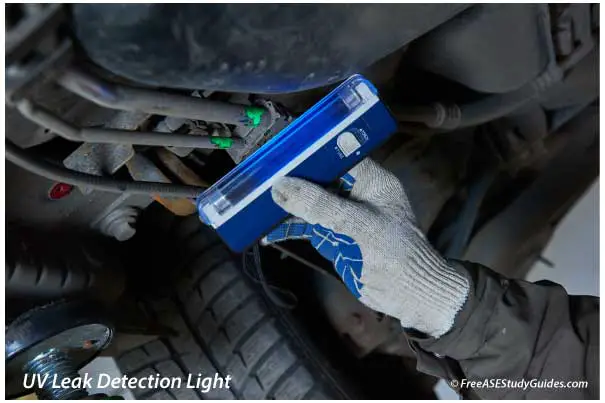Coolant System Pressure Test

Use a radiator pressure tester to test for leaks. Install the tester on the neck of the radiator or the coolant reservoir, and pump until you reach the pressure marked on the radiator cap. Check around the engine, hoses, and radiator for leaks. Check inside the floor and console area for heater core leaks.
When a vehicle has a persistent coolant leak, but an external leak can not be found, suspect a leaking or blown head gasket.

If the engine is started with the tester installed and the gauge quickly increases past the recommended psi, the engine has compression leaking into the coolant jacket. This may be due to a blown head gasket. Aluminum heads warp from overheating; cracks can form in the cylinder head or the engine block. Coolant leaking past this seal and into the combustion chamber burns white and results in white-gray exhaust. Always perform a block test to verify any suspicions.

The radiator pressure tester can also be used to check the radiator cap. There are different types of adapters, depending on the application. Install the cap on the tester and pump it to the recommended psi. If the cap loses pressure, replace the cap.

Use a dye penetrant for hard to find coolant leaks. Just add the dye to the coolant, heat the engine to operating temperature, and use the black light to inspect suspected areas for the telltale green fluorescent color.